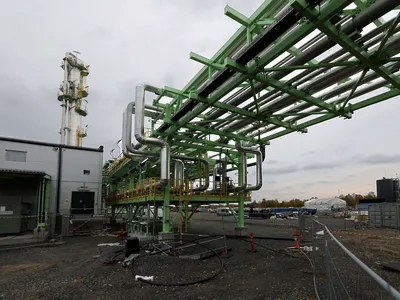On Friday, the Supreme Administrative Court (Supreme Administrative Court) upheld the decision of the Vaasa Administrative Court under the last midsummer BASFin on the environmental permit of the battery chemical plant, ie the cathode plant in Harjavalta.
The plant was to produce about 30,000 tons of battery chemicals a year.
Less than a year ago, the Administrative Court revoked BASF’s environmental permit and referred the permit back to the Regional State Administrative Agency.
BASF appealed the decision to the Supreme Administrative Court (Supreme Administrative Court), but it also came from there. In its decision issued last Friday, the Supreme Court upheld the decision of the Vaasa Administrative Court.
Now the situation is open. In an interview with the People of Satakunta, BASF Country Manager Tor Stendahl says the company plans to continue the project to start the plant. “We’re exploring alternative solutions,” he notes, but doesn’t further open up what these alternatives can be.
Kauppalehti did not reach Stendahl to clarify its statement.
New permitting process or some other change?
In the decision of the Vaasa Administrative Court confirmed by the Supreme Administrative Court, the right allows the company to start the entire environmental permit process again, but it would require significant changes to the processes and systems of the almost completed cathode plant.
For example, the court requires the relocation of an almost completed factory building. The Court considers that the activity covered by the application cannot be located in an important groundwater area, even though that groundwater has already deteriorated in part due to previous industrial activity.
It is difficult to blame BASF for this, as the city of Harjavalta has zoned the area for the needs of the heavy chemical industry, even though the site is located in both the groundwater area and the groundwater area.
In the town plan, this is noted with the remark that the construction takes into account the prohibition of groundwater pollution. However, this is not enough for the court.
“The fact that a body of groundwater has been polluted as a result of past activity shall not be considered a justification for granting a permit.”
Water protection thus takes precedence over the operation of a battery plant, and legally the matter is clear.
Controlling large sulphate emissions
As another matter, the plant’s sulphate emissions to the Kokemäenjoki River rose to the top of the court. The law requires substantial reductions in emissions, in practice, for example, by exploiting the precipitation technology favored by mines.
Under the terms of the authorities’ permit, BASF would have been allowed to emit 36 000 tonnes of sulphate per year, compared with 21 000 to 26 000 tonnes per year for the rest of Harjavalta’s industry. In practice, the Harjavalta area would be the largest source of sulphate emissions in Finland in these figures.
The decision of the Supreme Administrative Court emphasizes that the primary condition for granting an environmental permit is that the activities do not cause significant environmental pollution or danger. This cannot be demonstrated with certainty in the permit conditions issued by the regional authorities.
